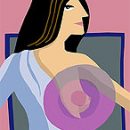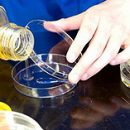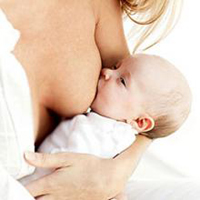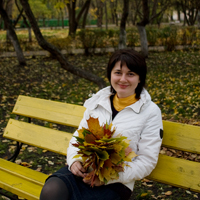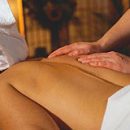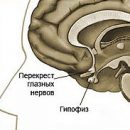Practicing gynecologists and mammologists are constantly faced with cases of disease of fibrous-cystic mastopathy. According to different data, the frequency of its occurrence ranges from 35 to 60% among all the examined. The question of the methods of therapy of this disease is directly related to such aspects as the reproductive function of women (in the patient group up to 40 years) and compatibility with other drugs (in the group over 40 years). And in that and in another case, treatment must be as soon as possible. «Gold standard» Therapies of benign diseases of the mammary glands and PMS in recent years has become a vegetable non-coronal drug - Mastodinon® («Bionorica» Germany)
Content
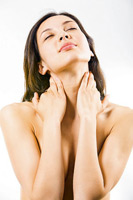 Mastodinone® Effective both under the vocal pathology of the mammary glands and during the disorders of the menstrual cycle. Mastodinone has a pathogenetic, dopaminergic mechanism of action (impact on D2 receptors of lactotrophs of pituitary gland), which reduces the secretion of prolactin by adenogipophysome. This normalizes the products of gonadotropic pituitary hormones, which leads to the elimination of the lack of yellow body and the disorders of the menstrual cycle and infertility. With a decrease in the content of prolactin under the action of the drug, the opposite development of pathological processes in lactic glands occurs during fibrous-cystic mastopathy and a cyclic pain syndrome (Mastalgia, Mastodynium) is born). Violations of prolactin secretion processes can manifest itself in the form of latent hyperprolactinemia, which plays an important role in the development of premenstrual syndrome. Against the background of taking the drug, due to its components, such manifestations of PMS are leveled as headaches, mental lability, irritability, depression.
Mastodinone® Effective both under the vocal pathology of the mammary glands and during the disorders of the menstrual cycle. Mastodinone has a pathogenetic, dopaminergic mechanism of action (impact on D2 receptors of lactotrophs of pituitary gland), which reduces the secretion of prolactin by adenogipophysome. This normalizes the products of gonadotropic pituitary hormones, which leads to the elimination of the lack of yellow body and the disorders of the menstrual cycle and infertility. With a decrease in the content of prolactin under the action of the drug, the opposite development of pathological processes in lactic glands occurs during fibrous-cystic mastopathy and a cyclic pain syndrome (Mastalgia, Mastodynium) is born). Violations of prolactin secretion processes can manifest itself in the form of latent hyperprolactinemia, which plays an important role in the development of premenstrual syndrome. Against the background of taking the drug, due to its components, such manifestations of PMS are leveled as headaches, mental lability, irritability, depression.
The important advantage of Mastodinone is that it does not cause a reduction in the level of prolactin below normal indicators, which distinguishes it from synthetic analogs. High security is already laid in the very definition of Mastodinone® as a vegetable drug.
Vegetable drugs have better portability, less frequency of adverse reactions, the possibility of long-term use — and as independent therapy, and in combination with other drugs, — and also practically do not have contraindications.
Abrahamovo tree — History and modernity
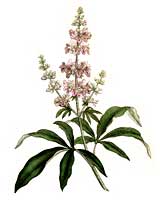
- normalization of elevated prolactin levels;
- reducing the activity of proliferative processes in the mammary glands;
- decrease in the formation of the connective tissue component;
- narrowing of dairy ducts.
These processes lead to the removal of the edema of the mammary glands, the decrease in mastalgia and the reverse development of degenerative changes in the tissues of the mammary glands. In addition, the use of the vegetable homeopathic drug Mastodinon® contributes to the establishment of a regular menstrual cycle, which makes it a preparation of first choice — both in the syndromes of mastopathy and PMS, which, as you know, are often combined in practice. The purpose of one drug is certainly the most acceptable for the patient both in terms of safety and from an economic position. But how effective is Mastodinone therapy® ?
Mastodinone®: Clinical studies have shown…
In the past 10 years, we also have several clinical studies that were clearly shown by Mastodinone®.
In a multicenter randomized, double-blind, placebo-controlled Double-Dummy study by Professor Wuttke W. — With the participation of 120 women, Mastodinone's effectiveness was studied® In solution and tablets for mastody. Patients did not have serious somatic diseases, they were excluded for the diseases of the mammary glands, pregnancy and lactation, as well as the reception of oral contraceptives and other hormonal drugs. Patients led diaries of pain on the eve of menstruation, including with an estimate of the intensity of pain on a visual-analog scale (from 0 mm as a lack of pain up to 100 mm as non-supported pain). In parallel, the presence of symptoms of PMS (swelling, pain at the bottom of the abdomen, headaches, emotional disorders). Through 3 therapeutic cycles, the decrease in the intensity of pain was 36.5 mm on the background of the Mastodinone solution and 36.7 mm on the background of a tabletted preparation, significantly different from the dynamics of indicators in the placebo group — A decrease of 20.8 mm (p = 0.0067, p = 0.0076). The effectiveness of therapy was noticeable after the 1st cycle: a decrease in painful sensations by your 22.5 mm on the background of receiving Mastodinone solution and by 10.5 mm in the placebo group (P = 0.00472). In addition, the symptoms of PMS are significantly less registered in the main groups in comparison with placebo. Treatment tolerance was good, there were mainly non-specific unwanted reactions of soft severity, and their frequency was comparable to such in the placebo group.
Another placebo-controlled, randomized, double-blind study of Mastodinone's effectiveness (drops) in the treatment of cyclic mastalgia, was carried out.Halaska and Sowa. The initial duration of the premenstrual voltage of the mammary glands was 5 days or more; Mastalgia's intensity was evaluated using a visual analog scale, and was 63.5 mm in the main group and 58.0 mm in the control group. In 1–2 cycles The average decrease in the intensity of the pain was 21.4 / 33.7 mm on the background of receiving VACS (n = 48) in comparison with 10.6 / 20.3 mm in the placebo group (n = 49), the differences are statistically significant (P = 0,018; p = 0, 006). Through 2 therapeutic cycles in 71.2% of women of the main group, the intensity of pain according to your data did not exceed 35 mm. Through 3 therapeutic cycles, the average pain intensity was reduced by 54% (34.3 mm) in the main group and by 40% (25.7 mm) in the placebo group (P = 0.064). In addition, women with initially heavy mastalgia significantly decreased the number of days during which they marked pain. Already through 2 cycles of therapy 50% of patients did not notice the presence of days with severe pain syndrome. Subsequently, this favorable trend has persisted. In the course of the study, there was a good tolerability of Mastodinone. Unwanted effects were rarely observed, their frequency in both groups did not differ, and they were only easy severity.
One of the recent 2008., There was a study in the FSU Russian scientific center of radiyoiodiology. It participated 650 women with various forms of mastopathy. After a 3-month course of treatment by Mastodinone® Comprehensive examination data were as follows:
- The positive effect in general was noted in 76.7% of patients;
- 55.6% — with the predominance of the fibrous component;
- 88.9% — with the predominance of the ferrous component;
- and 89.7% — with a predominance of a cystic component.
This was manifested by a decrease in the intensity of Mastalgia and tissue density and edema on mammograms. Control in half a year showed that the effect of treatment is maintained in all patients. And it is not surprising: Mastodinon® — Popular drug, it is actively appointed with symptoms of mastopathy and PMS. Data of questioning doctors of women's consultations once again confirm the results of clinical studies and talk about the pronounced action of Mastodinone® and his excellent tolerant patients.
by the way! It was noted that Mastodinon® Also relieves pain in lactic glands on the background of hormonal contraception or when conducting

